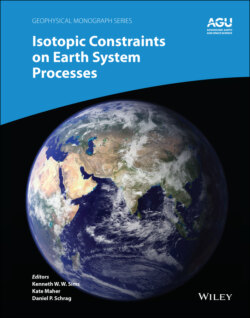Читать книгу Isotopic Constraints on Earth System Processes - Группа авторов - Страница 20
ABSTRACT
ОглавлениеLaboratory experiments were used to document kinetic isotope fractionation by mass transport in high‐temperature silicate materials. Large kinetic isotope fractionations were found in experiments in which basalt and rhyolite were juxtaposed and annealed in a piston cylinder assembly, and in experiments where the piston cylinder assembly was displaced from the furnace hot spot so that mass transport was also driven by differences in temperature (i.e., Soret diffusion). Another set of laboratory experiments showed, somewhat surprisingly, that diffusion in silicate minerals can be more effective at fractionating isotopes than diffusion in silicate melts. Isotope fractionations by diffusion in minerals are especially important in that they provide a new way of determining the degree to which diffusion was responsible for all, some, or none of the zoning of minerals from natural settings. Evaporation of silicate materials was an important process in the protoplanetary nebula. This motivated vacuum evaporation experiments that quantified the isotope fractionation associated with the amount of a parent element volatilized, allowing one to interpret the isotopic fractionation of early solar system materials in terms of mass loss by evaporation. A closing section gives some thoughts regarding future directions for research on high‐temperature kinetic isotope.
